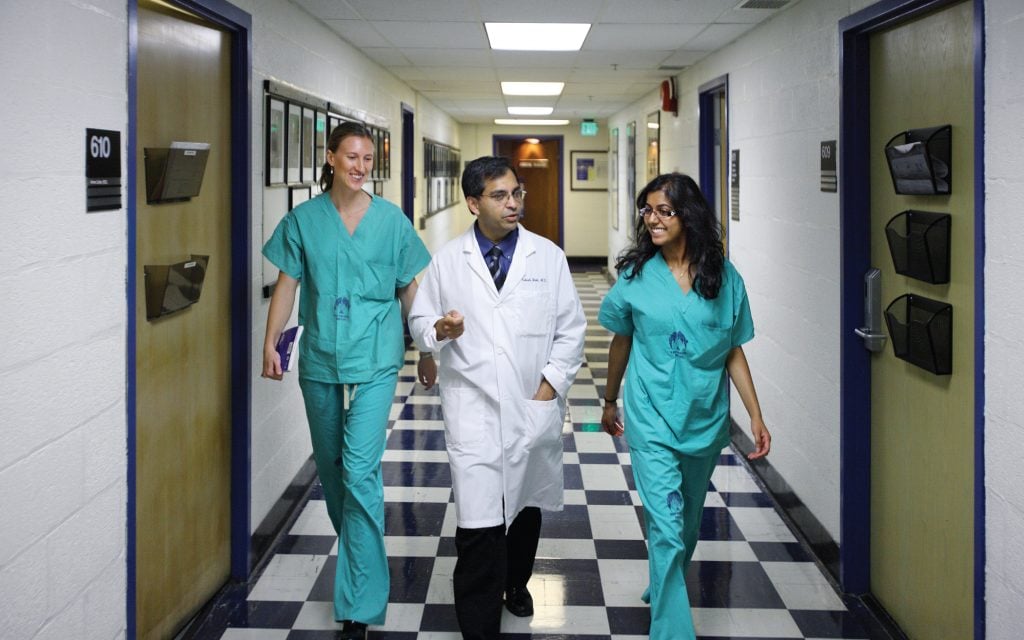
It’s shortly after 2 p.m. on a summer day, and Hopkins spine surgeon Jay Khanna, associate professor of orthopaedic surgery and biomedical engineering, is completing his third delicate spine surgery of the day. At his side is John-William Sidhom, a master’s student in the Johns Hopkins Center for Bioengineering Innovation & Design (CBID) program, who has been observing Khanna’s every move.
Sidhom studied biomedical engineering as an undergraduate at University of Michigan and already has one U.S. patent on an orthopedic technology under his belt. Today he stands on a step stool watching as Khanna deftly removes a severely herniated disk from the neck of a 47-year-old woman. Then, using a drill, Khanna flattens the endplates of the vertebral bodies, above and below the disk space, to make room for placement of a bone graft.
For a student intent on attending medical school, Sidhom is exhilarated by this opportunity to work alongside top Hopkins physicians as part of his yearlong master’s program in medical innovation. But at Good Samaritan Hospital in Baltimore County, he isn’t in the operating room to learn the finer points of surgery. He is looking at the entire surgical process—at the tools, the monitors, the materials—as an engineer. In operating rooms across Johns Hopkins Hospital and other facilities, his 15 CBID classmates are undertaking similar investigations. Their goal: to engineer new tools and methods that will improve the way health care is delivered.
“I can give most clinicians a problem, and they think about it in the same way every time. In a sense, our ability to innovate is constrained by our medical education,” says Khanna, who has served for three years as CBID’s clinical director.
“But our young engineers are incredibly intelligent, nimble, and solution-oriented. They think outside the box, and they just come at things in a different way,” he says.
This eight-week stint spent inside Johns Hopkins Hospital is one key to the success of the CBID program, which already has hit a few home runs. From student projects, for example, has grown Cortical Concepts’ specialized pedicle screw that allows surgeons to operate more easily on patients with osteoporosis, as well as BOSS Medical’s novel method to retrieve bone for grafting.
Over the next nine months, Sidhom and his master’s classmates will draw on what they’ve learned here at the hospital as they work in design teams to create innovations for the high-tech medical device market in the U.S., as well as global health projects for developing countries.
As Sidhom takes a break from observing everything from joint replacements to spine surgery, he says: “Our professors have asked us to remain open-minded. So I’m taking a broad view, to see if we can come up with an innovative way to improve an area of medicine.”




